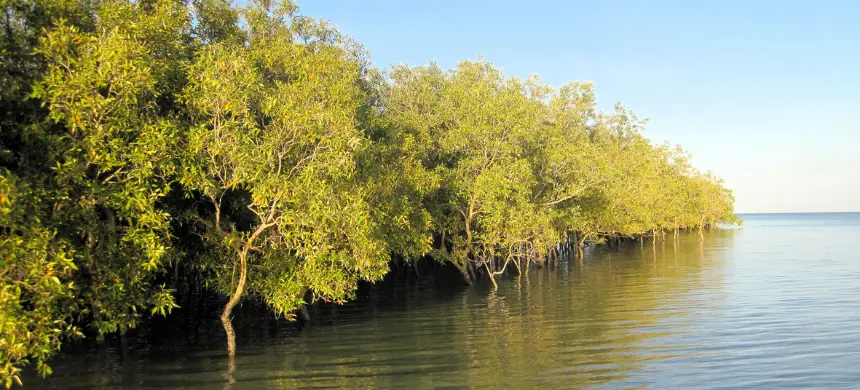In a press release published on the Eureka Alert website, ecologists from the US Forest Service and other researchers have conducted groundbreaking research indicating that planted mangroves can store up to 70% of the carbon stock found in intact mangrove stands after just 20 years. Scientists have long recognized mangroves’ remarkable capacity to absorb and store carbon. However, little information was available on how long it takes for planted mangroves to reach carbon storage levels comparable to those of intact mangroves.
According to Rich MacKenzie of the Institute of Pacific Islands Forestry, “About ten years ago, Sahadev Sharma, then with the Institute of Pacific Islands Forestry, and I discovered that 20-year-old mangrove plantations in Cambodia had carbon stocks comparable to those of intact forests.” Under the direction of Carine Bourgeois from the Forest Service’s International Programs office, MacKenzie and Sharma collaborated with a multinational group of mangrove researchers. They found that after twenty years, planted mangroves had achieved 71–73 percent of the carbon stock of intact stands, using logistic models constructed from forty years of data and roughly 700 planted mangrove stands worldwide.
Read More: How Do Keto-Friendly Fruits Contribute To Successful Weight Loss?
These findings could significantly impact global efforts to restore mangroves. Over the past 50 years, 35% of the world’s mangrove area has disappeared due to historical circumstances, human-induced land use changes, extreme weather, and erosion.
“As our dataset grows and more data become available, we hope researchers and stakeholders will gain new insight into planning and techniques for restoring mangroves,” said Sharma.
Mangroves are being observed as part of the ongoing research to evaluate their development. “Periodic and regular monitoring of mangroves can provide useful data on the survival and success of restoration efforts and help devise adaptive management strategies as needed,” said Rupesh Bhomia of the Center for International Forestry Research and World Agroforestry (CIFOR-ICRAF).
Read More: Industry calls on government to reconsider 20% FED on domestic fruit juices
The significance of protecting and rehabilitating mangroves is becoming increasingly apparent on a global scale. These trees act as coastal barriers against storm surges and tsunamis in addition to being powerful carbon storage plants. They also serve as nurseries for various aquatic animals and habitats for a wide range of species.
However, MacKenzie warns that mangrove plantings may not always be the best option for rehabilitation. “Mangrove plantations that are properly designed and managed can restore carbon stores more successfully than degraded stands. But this does not always imply that mangrove plants are the most effective restoration technique,” he said. The researchers emphasized that planting mangroves cannot replace the conservation of intact stands. “According to our simulations, replanting in all highly restorable mangrove regions over 20 years will absorb less than 1% of yearly global emissions. It is crucial to preserve the existing mangrove stands for this reason,” said Bourgeois.











